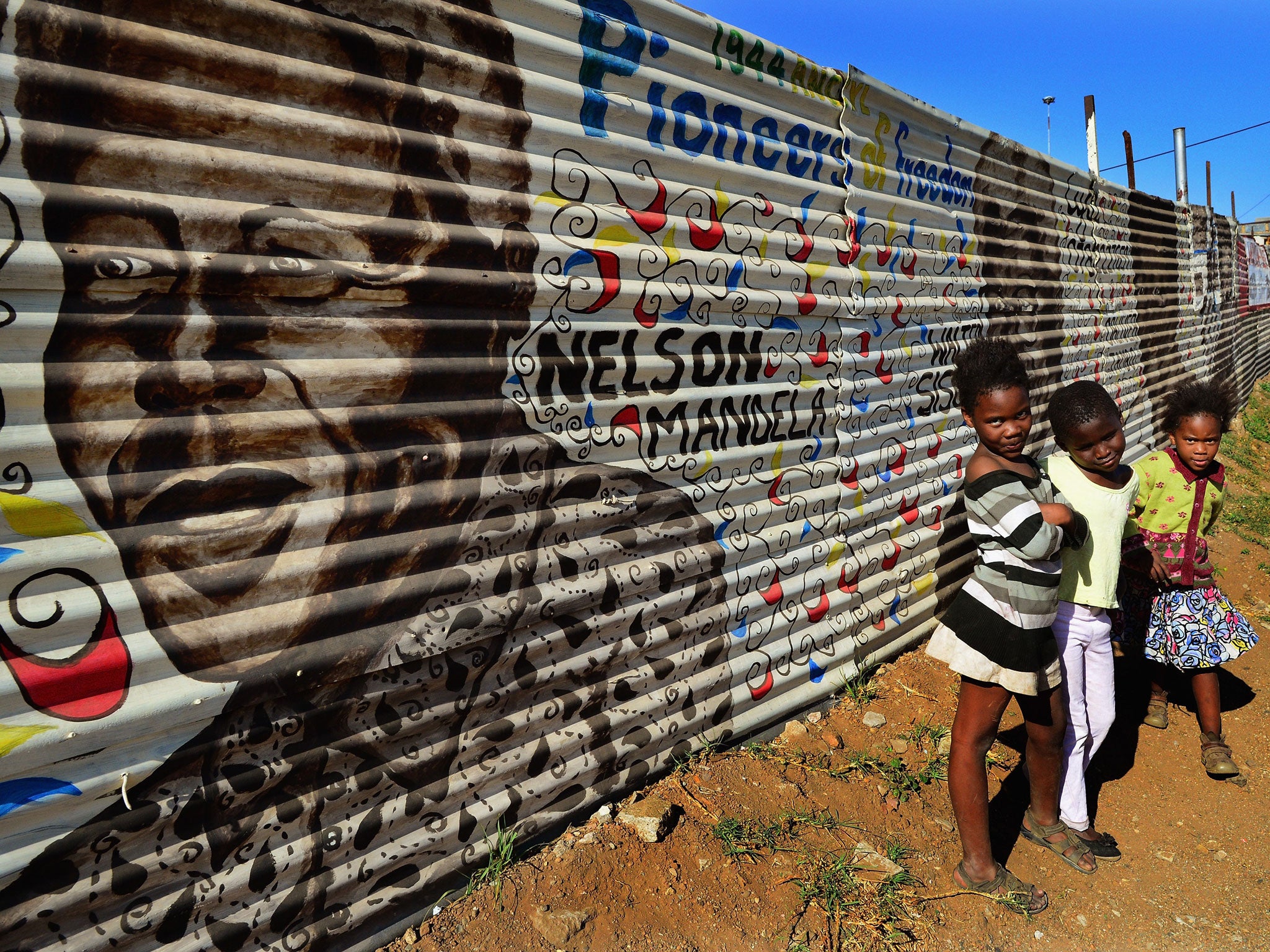Separate and unequal: Apartheid's legacy lives on
World View: South Africa has certainly changed since the ANC came to power, but the party's failure to tackle economic inequality is glaringly evident

South Africa's system of apartheid was built on the simple, if false, assertion of "separate but equal". It was something that even its most complacent supporters knew to be a lie. The reality was an economy of exclusion and such an effective concentration of land, wealth and economic power in the hands of the few that it has proven remarkably resistant to change. A short drive through the country nearly 20 years after the system was formally dismantled reveals that the architecture of separate but unequal remains.
South Africa's first-world roads deliver you quickly from the prosperous town and city centres through high-walled suburbs into the satellite townships that surround them. At first glance these settlements are unrecognisable from the shanty towns in much of the rest of sub-Saharan Africa. Since the end of apartheid the African National Congress (ANC) government has built more than three million homes through its reconstruction and development programme. Tarred roads divide plots of identical houses while telegraph poles supply them with electricity. Even the colour scheme is different, with almost all these townships washed in calm pastel shades in contrast to the loud acrylics of soft-drink and telecom brands splashed across their counterparts elsewhere on the continent. Too many of South Africa's townships are still dormitory towns. There is little or nothing of the small-scale farming I am used to seeing elsewhere, the roadside furniture-makers or general bustle. They are places where the end of the month delivers meagre welfare payments and long lines stretch from lottery terminals.
In Kenya, where I live, the multiplying slums in which much of the urban population live perform a different function. They are reception centres for those leaving the rural areas and clearing houses for new entrants to the informal economy. They are often filthy and overcrowded, lacking in basic services, but they are also industrious and entrepreneurial places.
The story of Dimbaza, a settlement of some 30,000 people in the Eastern Cape, on the road towards Nelson Mandela's ancestral home in the Transkei, offers a partial explanation. Dimbaza was created in the 1960s as a dumping ground for blacks who were judged to be living illegally in white areas. There were no jobs on the other side of the forced relocation, just a long commute to the nearest white-owned businesses at King William's Town. The bleak lives led here in the shadow of official neglect were the subject of a 1974 documentary, Last Grave at Dimbaza, which was smuggled out of the country and went on to be influential in stirring international opposition to apartheid.
Over the past week I have driven across the country listening to a recording of Nelson Mandela's memoir, Long Walk to Freedom. It was a useful reminder that in the space of half a century South Africa has moved from whites-only election campaigns fought and won on the slogan "put the Kaffir in his place" to discontent at the performance of its third black president, Jacob Zuma. Things have changed but the pace and trajectory of that change is open to question. The release of new census data last year showed whites still earn six times more than blacks on average, a slight shrinking of the gap since 1994. If current trends persist then the two communities' buying power will not converge until 2061. Most analysts find even that distant date overly optimistic.
I was struck that some of the most fair-minded and sharp-eyed observers that I met were students at Mandela's alma mater, the University of Fort Hare, who said they would not be voting at next year's elections. They acknowledged the fundamental political rights that the 94-year-old – still critically ill in hospital – had delivered, but disagreed with his refusal to dismantle the structures of economic power. They were critical of the failure to clinch a better deal with the owners of the gold and platinum mines on which South Africa's relative prosperity depends. They did not see anyone on the political scene who would change that.
The ANC will survive the long-anticipated parting of its first president and win next year's vote. Beyond the Democratic Alliance, which remains a white-dominated party, the opposition is either detached or dangerously populist. The dignified Mamphela Ramphele is an effective critic of the ANC, but she entered politics from a lucrative post as chair of one of the country's largest mining firms. At the other extreme is Julius Malema, who like Mandela was a radical head of the ANC's Youth League. After being thrown out of the ruling party he has attempted to launch a new political platform calling itself Economic Freedom Fighters, which will try to attract support by calling for the mines to be nationalised.
In white South African circles there are persistent fears that the departure of the great reconciler will be the cue for an outburst of violence. When seen from the townships his long goodbye seems unlikely to trigger anything dramatic. Sindile Mngindwa, an unemployed 40-year-old who survives on a small disability allowance awarded him after he lost his hearing, had a more realistic assessment: "South Africa was like this when Mandela was alive, it will be like this after he dies."

Join our commenting forum
Join thought-provoking conversations, follow other Independent readers and see their replies